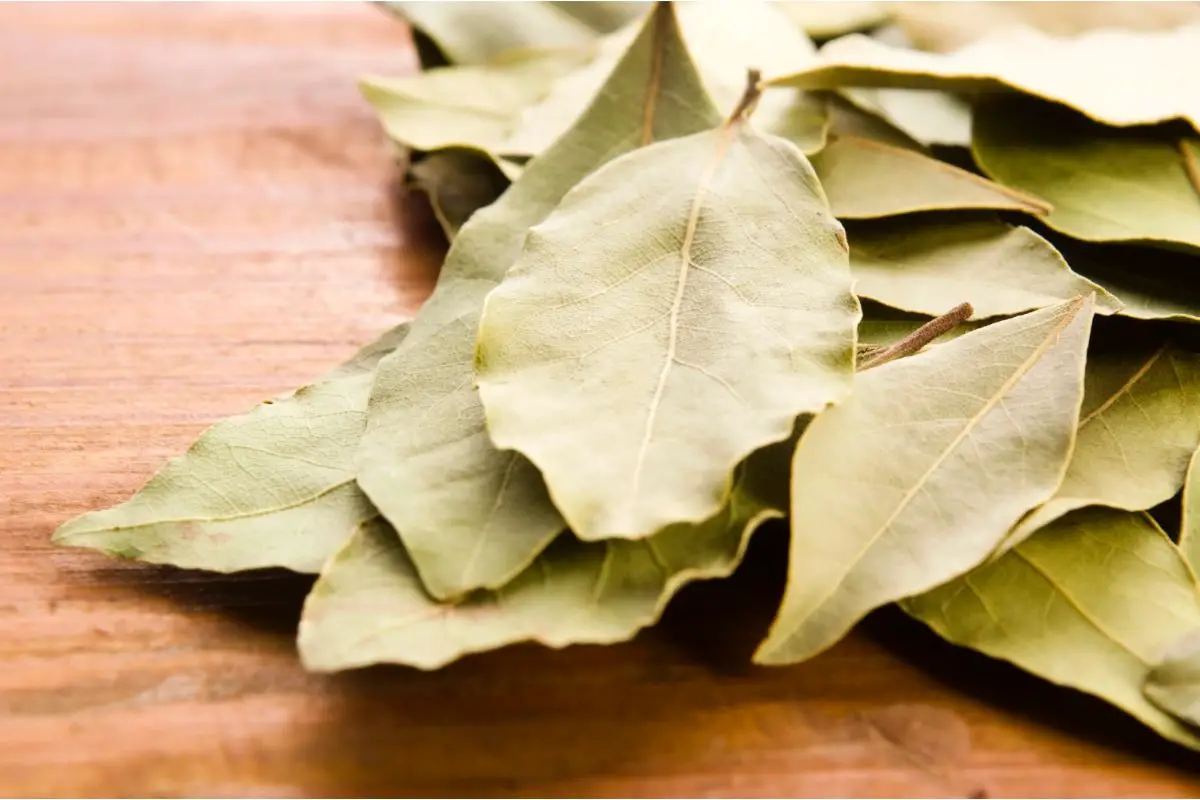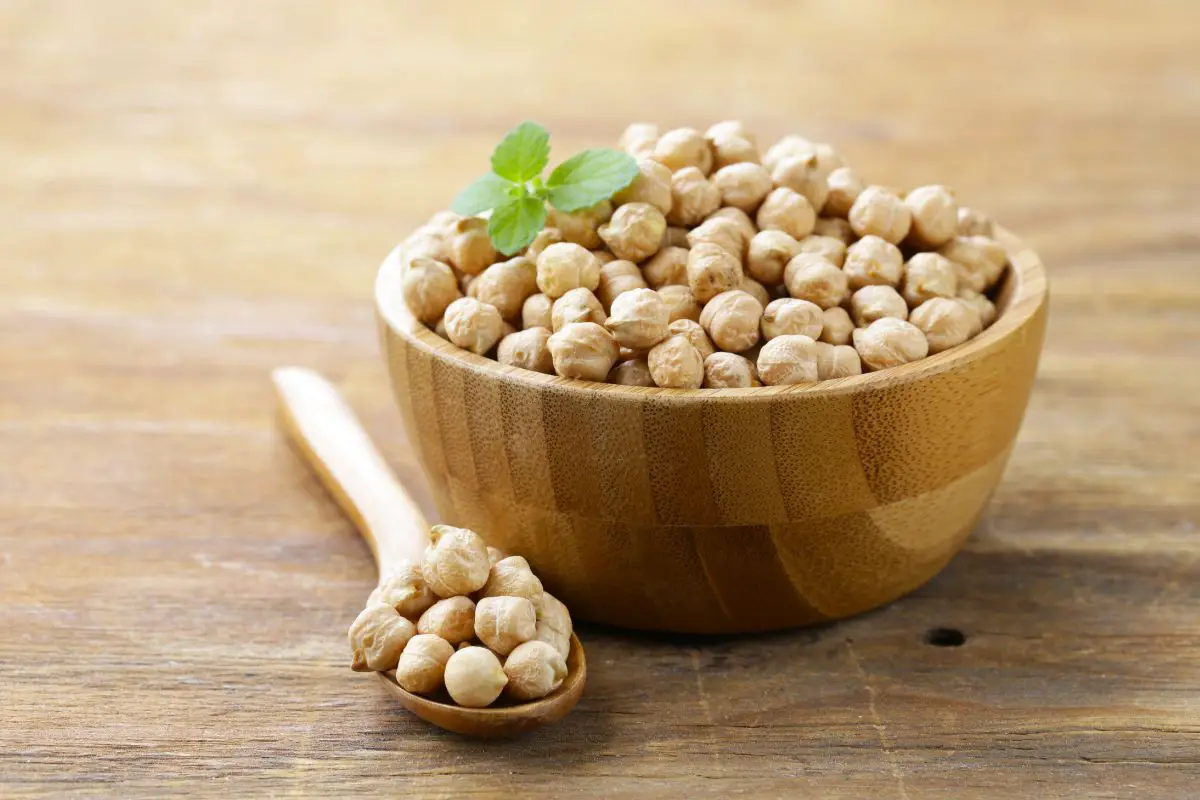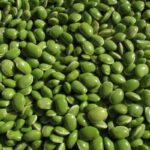The bay leaf is often a very mysterious herb. Bay leaf is a common ingredient in many recipes for sauces, stews, soups, and more, but their flavor can often be hard to put your finger on or describe.
That said, they do certainly bring a unique flavor to a dish that, while hard to describe, can often feel missing if you don’t include it. But if we don’t have a bay leaf, how can we replace this necessary flavor element?
Part of the issue here is identifying the flavor that bay leaf imparts.

Today we are going to explore the bay leaf and how we can use other herbs or ingredients to replace its unique taste, as well as covering what the actual flavor of a bay leaf is and why they are used in cooking.
We hope to propose some easy alternatives to the ay leaf you can use in any recipe to impart its unique flavor.
Keep reading below to learn more about the bay leaf as well as how you can replace the herb if you don’t have it or can’t get your hands on it. FInd this and more below.
What Is A Bay Leaf?
In terms of their form, the bay leaf is literally what it says, teh whole leaf of the bay tree.
The bay leaf can actually come from a number of trees described as ‘bay’ such as the bay laurel, but most bay leafs in the US are from the California bay tree.
This said, if you are short on the old bay leaf, it is quite likely, if you live in the temperate West, that someone may have a bay bush or tree down the road, or just growing wildly, that you can pick and use easily.
For reference, you get both fresh and dried bay leaves, neither of which should be eaten but should be removed from your dish after they have imparted their flavor.
The flavor that bay imparts is actually harder to define, this challenge was elucidated in 2016 in Kelly Conaboy’s article ‘The Vast Bay Leaf Conspiracy’ which comes with the hot take that bay leafs actually aren’t a necessary ingredient at all and don’t impart any noticeable flavor.
The latter thought is understandable but just not true, like many point out if you boiled a bay leaf in water and compared it to normal water, there is a taste difference.
Bay leaves are indeed a subtle flavor, but as cooks we rely on subtlety to build a complex flavor profile, if they imparted a strong flavor into a dish they wouldn’t be so widely used.
Put simply, a bay leaf can impart a piney, minty, fragrant flavor that is hard to get from other herbs. It helps a dish stay light and not be so heavy, and can be used in amalgamation with acidic flavors to brighten a dish up.
Often fresh bay leaves can provide you with a better understanding of its scent and flavors due to its freshness.
An interesting counterpart to bay leaf is Mexican epazote which gets a similar rap.
Sometimes Mexican food made at home can often feel it lacks a specific flavor, this is almost always epazote, something Westerners aren’t so aware of.
Bay leaf is often similar, when it’s used it is hard to pick out from the other flavors, but without it it can feel like there is complexity to the flavor that is missing.
Substitutes For Bay Leaf
Should you not have any Bay leaf handy, or a bay leaf producing plant, then here are a few ideas of substitutes you can roll out in its place.
1. Epazote
As we just described, epazote is an herb that is very similar to bay leaf. As we described, Epazote is a really important flavoring in Mexican cooking that is often missing from non-traditional Mexican cooking.
The flavors it imparts are very similarly described to bay: anise, mint, pint, fresh, vegetal, and more.
Like bay it is more pungent when fresh, often people suggest it has a pleasant medicinal flavor, and can be used in place of bay to impart a similar flavor. Bay is often used in place of Epazote.
2. Oregano
Oregano is probably the closest to bay leaf you can get with a generic and common herb. Oregano is similarly hard to describe but has the properties we have listed previously with these leafy herbs.
Oregano is perhaps a bit deeper in its flavor, with more natural oils and umami flavors. It has that earthy astringency and potential bitterness often ascribed to bay leafs.
Oregano is very common in the West due to its usage in Mediterranean and Italian cooking, often recognized as a flavor unique to pizza sauce.
3. Thyme
Thyme is another herb that is quite similar to the previous herbs listed.
We would say that thyme falls on the more fragrant and piney notes of the bay leaf, and is great to use in combination with other herbs that can provide a more savory balance to the herb.
Thyme is perhaps best used fresh, while the previously mentioned herbs can be totally fine dry. Dry thyme can often get lost in the dish, while when used fresh it has a piney pungency that is similar to bay leaf.
4. Sage
Sage is another background herb that has a unique flavor. WHen used fresh it can have a strong flavor that is quite umami, with lots of natural oils.
Sage is a good winter or fall herb that can provide a lot of warmth to a dish. It can often have the vegetal and pleasant bitterness that a bay leaf can also bring.
5. Marjoram
Marjoram is another common herb that isn’t actually used that widely. It is often a herb reserved for those practiced home cooks who have a good understanding of herbs, or just in Italian cuisine.
It can be quite similar to oregano, and often looks the same, but while it has the same sort of umami flavor from its natural oils it can also be piney and floral like the bay leaf.
6. Italian Seasoning
Italian seasoning can often be frowned upon by the Europeans and avid cooks among us. However, this blend of herbs can combine many of the previously mentioned herbs in dried form which can create a similar vibe to the bay leaf.
The italian herb seasoning will often have dried basil, oregano, sage, thyme, and other herbs, many of which when used in combination can bring the same notes that bay leaf can.
Final Thoughts
As you can see, there is a whole world of herbs and seasonings out there that you can try.
When you start to get used to which herbs are useful in certain situations, as well as their general flavor and scents, you can really start to become obsessed with herbs and how you use them.
The bay leaf debate will go on forever, with many suggesting it doesn’t bring much. Bay leaf is never a strong flavor, which is why it’s used in so many dishes.
Bay leaf is subtle and brings complexity to a dish that isn’t always recognizable but is more noticeable when it is absent from a dish.
Substitutes For Bay Leaf: What Does A Bay Leaf Taste Of?
Course: Substitutes4
servings30
minutes40
minutes300
kcalThe flavor of bay leaf is hard to place, but it’s certainly something you can miss when it’s not there. Here are some of our favorite bay leaf substitutes to try today.
Ingredients
Epazote
Oregano
Thyme
Sage
Marjoram
Italian Seasoning
Directions
- Decide on what substitute you need
- Pick a substitute from the list above
- Read what you need to substitute with
- Create the recipe and enjoy
Recipe Video
https://youtu.be/Weu9AtiGHzkVideo can’t be loaded because JavaScript is disabled: Bay Leaf Substitute – Here Are Alternatives For Bay Leaves (https://youtu.be/Weu9AtiGHzk)- What Exactly Do Chickpeas Taste Like? Is There A Distinct Flavor? - September 30, 2023
- Top 11 Low Carb Options at Sonic Drive-In for Keto Diet - September 30, 2023
- What Should You Serve Alongside Potato Salad? 8 Incredible Side Dishes - September 30, 2023











